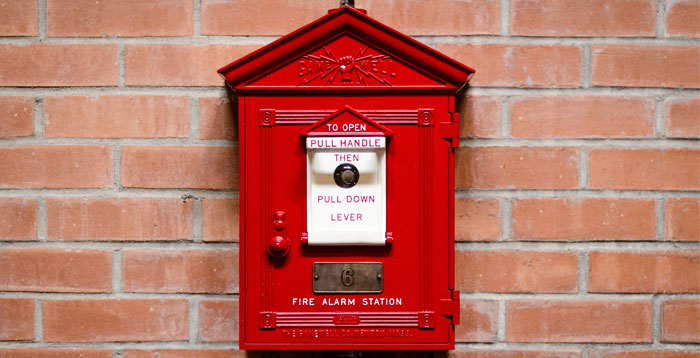Powered Exoskeletons for Fire and Rescue Services
They might seem like far-fetched science fiction, but powered exoskeletons are a real thing. Exoskeletons are still waiting to blossom as a medical, military and industrial staple – but the technology is quickly gathering speed, showing particular promise in stroke and paralysis rehabilitation.
Exoskeletons offer some unique advantages that emergency services, in particular fire and rescue, stand to benefit greatly from. Improved mobility with heavy equipment, superhuman strength and the ability to withstand extreme environments could save more lives than ever before.
For now, firefighting exoskeletons are relegated to the realm of conceptual designs. As the technology matures, emergency services can expect enhanced lifting abilities, better stamina and maybe even arm-mounted water cannons.
IoT Smoke Alarms
Smart fridges, smart alarm clocks, smart TVs – whatever your take on it, the IoT (the Internet of Things) is here to stay. Connected devices have so many applications, it’s almost impossible to exhaust the possibilities.
The use of IoT ranges from things as frivolous as remotely boiling a kettle, to as life-changing as assistive technologies for disabled people. The technology is still in its infancy, and a plague of high-profile hacks have led to many people avoiding it. But in some cases – it could be a life saver.
One of those cases is connected hearing aids for deaf people, which offer far more than convenient music playback. With connection to smoke alarms, immediate warning can be given to users regardless of background noise levels, which could save lives.
Firefighting Drones
Another blossoming area of technology is found in drones, which like IoT devices, have also had their fair share of controversy. In spite of the challenges they pose to privacy and public safety, drones could soon be helping emergency services.
Firefighting drones are a new area of application for these flying machines, and they could greatly improve on the reach of traditional fire engines. The technical challenge is weight: how can a small, lightweight drone lift enough water to be effective?
Aerones believes it has the answer: a heavy duty drone that has power and water fed to it umbilically, giving it an unlimited supply of both.
The umbilical also provides control, so the drone can’t be hacked and hijacked – but in the event of interruption, backup batteries and radio control kick in, with 20 minutes of power to allow the drone to continue operating and to land safely.
Drones could be useful to emergency services in a variety of situations – like finding routes to safety in large buildings, or looking for survivors in hazardous environments. Their potential reaches far beyond automated package delivery, so hopefully we’ll see drones contributing to saving lives soon.
Fire Safety Specialists
At Coopers Fire, we’ll continue to progress our own innovations in fire curtains and fire protection – so that buildings can be safer without sacrificing design. To find out more, or to enrol in one of our educational training courses, call us on 02392 454 405 or email info@coopersfire.com.


